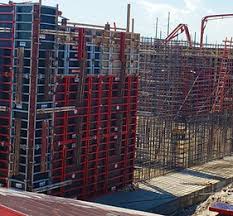Nov . 08, 2024 19:03 Back to list
slab shuttering
Understanding Slab Shuttering Key Aspects and Benefits
In the realm of construction, the use of appropriate formwork is critical to ensuring that structures are both safe and aesthetically pleasing. One crucial component of formwork is slab shuttering, a method used to support concrete slabs before they gain sufficient strength. This article delves into the definition, types, benefits, and best practices associated with slab shuttering.
What is Slab Shuttering?
Slab shuttering refers to the temporary structure that holds freshly poured concrete in place until it hardens and can support its own weight. It is designed to shape the concrete and provide support during the curing process. The principles of slab shuttering apply to various slab types, including one-way slabs, two-way slabs, and flat slabs, which are widely used in the construction of buildings, bridges, and other infrastructure.
Types of Slab Shuttering
There are several types of slab shuttering systems employed in construction, including
1. Timber Shuttering Traditionally, timber has been a popular choice due to its availability and ease of use. It can be cut to various shapes and sizes, making it versatile for different slab types. However, timber can absorb moisture, which may lead to warping and other structural issues if not treated properly.
2. Metal Shuttering This includes panels made of aluminum or steel. Metal shuttering is durable, reusable, and provides a smooth finish to the concrete. It is particularly beneficial for large construction projects, as its long lifespan and resistance to deformation make it a cost-effective solution over time.
3. Plastic Shuttering An emerging option in the construction industry, plastic shuttering is lightweight and easy to handle. It is resistant to moisture and can be reused multiple times without significant wear. However, it may not offer the same level of structural support as timber or metal options.
4. Adjustable Shuttering Systems These systems allow for flexibility in height and shape, enabling the construction of slabs in various architectural styles. They are particularly useful in projects that require unique or complex designs.
Benefits of Slab Shuttering
The proper use of slab shuttering brings numerous advantages
slab shuttering

1. Structural Integrity Slab shuttering supports the concrete until it reaches its design strength, preventing deformation and ensuring that the final structure is stable and strong.
2. Cost-Effective Although the initial investment in shuttering materials can be substantial, techniques such as reusability (especially with metal and plastic systems) can significantly lower long-term expenses.
3. Quality Finish High-quality shuttering provides a smooth surface finish, reducing the need for extensive post-construction finishing work. This enhances the aesthetic quality of the structure.
4. Construction Speed With well-designed shuttering systems, the speed of construction can improve significantly. Quick assembly and disassembly processes translate to shorter project timelines.
5. Safety Properly installed slab shuttering helps minimize workplace accidents. A stable formwork system can prevent collapses that could endanger workers.
Best Practices for Slab Shuttering
To maximize the benefits of slab shuttering, several best practices should be followed
1. Detailed Planning Adequate planning is essential for selecting the right type of shuttering based on project specifications. Understanding load requirements, slab thickness, and curing time are vital.
2. Regular Inspection Before pouring concrete, thorough inspections of the shuttering should be conducted to ensure that there are no defects or structural weaknesses.
3. Adequate Support Ensure that the shuttering is properly supported and braced to withstand the weight of the wet concrete. This involves using props and supports that are both strong and stable.
4. Appropriate Materials Choose materials that are suited for the specific environmental conditions of the construction site, such as dealing with moisture or extreme temperature variations.
In conclusion, slab shuttering is a foundational element in concrete construction that significantly impacts the overall integrity and quality of structures. By understanding its types, benefits, and best practices, construction professionals can ensure safer, more efficient, and aesthetically pleasing outcomes in their projects.
-
Premium Formwork Wing Nuts & Tie Rods | Factory Supplier
NewsAug.29,2025
-
Expert Ringlock Scaffolding: Durable, Safe, Efficient Solutions
NewsAug.28,2025
-
Ringlock Scaffolding: Strong, Safe & Efficient Solutions
NewsAug.27,2025
-
OEM Column Formwork: Circular, Curved & Inclined Solutions
NewsAug.26,2025
-
Premium Scaffolding Jacks: Stable, Adjustable & Durable
NewsAug.25,2025
-
OEM Wall Formwork & Shuttering: Flexible & Curved Solutions
NewsAug.24,2025